#Francia Russell
Explore tagged Tumblr posts
Text
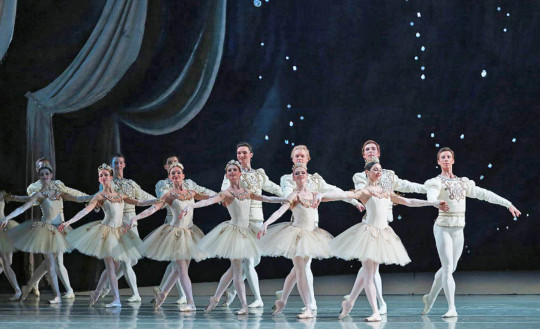
Above: the Maryinsky Ballet in the Diamonds section of Jewels. Photo: Kassir St. Petersburg
The New York Times has several new articles on the New York City Ballet to mark its 75th Anniversary Season, which opens Sept. 19. I'll be posting them all.
CITY BALLET AT 75
The Long Life and Long Reach of George Balanchine’s Butterflies
Balanchine didn’t think his ballets would last. But many have become classics, the cornerstone of repertory not just at City Ballet but around the world.
By Brian Seibert
While celebrating its 75th anniversary this fall, New York City Ballet is performing 18 ballets by its founding choreographer, George Balanchine. But to get a sense of the global standing of Balanchine, 40 years after his death, other numbers might be more telling. Last year, for instance, around 50 other ballet companies across the world performed his works, about 75 dances in total.
Balanchine likened his ballets to butterflies: “They live for a season.” But they have lasted much longer than that. They have become classics, cornerstones of the international repertory, 20th-century equivalents of 19th-century staples like “Swan Lake,” danced everywhere by all the major ballet companies and most of the minor ones, too.
These ballets, like Balanchine, emerged from the same Russian Imperial tradition as “Swan Lake,” but were shaped—as he was—by America, and by modernism and other 20th-century searches for the new. Always intimately connected to music, they sometimes told stories and sometimes, like music, were more abstract arrangements of forms and energies. They stretched ballet—in technique, in how daring and dynamic it could be, in how little outside of itself it needed — and were unparalleled in range and influence, so much so that the state of ballet is often framed as a question: Where is the next Balanchine?
City Ballet still performs by far the most Balanchine—the most ballets, the most often—but performances by other companies probably reach as many or more people, certainly in more places. All these performances, though, are connected to New York City Ballet, because the dissemination of his works remains a matter of lineage—of connections to Balanchine.

Above: Ballet Imperial (Tchaikovsky Piano Concerto #2) performed by the Paris Opera Ballet, with Valentine Colasante and Pablo Legasa. Photo: Agathe Poupeney
Before City Ballet became a durable laboratory and library for Balanchine’s choreography, he often worked as a choreographer for hire. That’s why American Ballet Theater dances “Theme and Variations,” which he made for that troupe in 1947. But few of the companies he created works for have survived, and most of the works that survived are those that became part of the City Ballet repertory. The company was the hub from which his influence radiated.
In the early years of the company, Balanchine sometimes staged works for European troupes with which he was connected: Paris Opera Ballet, the Royal Danish Ballet, what became the Royal Ballet. The reception to his innovations, especially the more radical ones, was highly variable, both abroad and in the more ballet-bereft country he had made his home. There, Balanchine was both generous and prudent with his ballets.
“He was giving them away for free, but he was in control,” said Jennifer Homans, the author of “Mr. B: George Balanchine’s 20th Century.” “Looking at the correspondence, you can see he was careful about who could do it and who couldn’t, and about which ballets could be done by others and which couldn’t.” He staged them himself, or he sent people he trusted. Francia Russell danced with City Ballet from 1956 to 1961. Since 1964, when she became a ballet master at the company, she has staged more than 200 productions of Balanchine ballets for other troupes. “They weren’t many people doing it at the beginning,” she said. “At first, I staged only ballets that I had actually danced.” Later, it became possible to consult films, but Russell didn’t use them much. “I always said I’m staging them the way I danced them when with Mr. B was with us.”
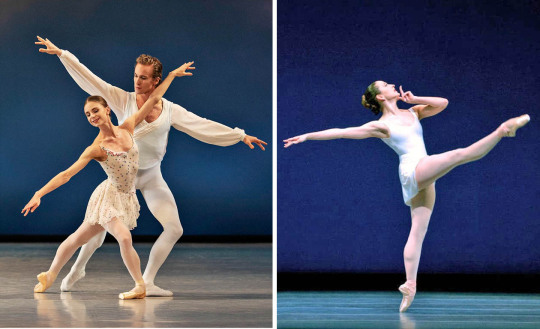
Left: Ida Praetorius and Jón Axel Fransson of the Royal Danish Ballet in Ballo della Regina. Photo: Henrik Stenberg Right: Pacific Northwest Balllet's Carrie Imler in Apollo. Photo: Angela Sterling
It was during the 1960s that City Ballet became a dominant institution, with a custom-built theater in the new Lincoln Center. An exceptionally large grant from the Ford Foundation put City Ballet and its affiliated School of American Ballet at the helm of a program to support ballet and ballet education. Following Balanchine’s recommendations, the foundation granted seed funding to regional troupes like Boston Ballet and Pennsylvania (now Philadelphia) Ballet. Balanchine granted these fledgling companies something nearly as important: some of his works, free of charge.
That process continued as members of City Ballet founded their own companies or became artistic directors. Arthur Mitchell, the company’s first Black principal dancer, erected the repertory of Dance Theater of Harlem, founded in 1969, on a foundation of Balanchine pieces. Some City Ballet dancers found leadership roles in Europe, like Patricia Neary in Switzerland. In 1977, Russell and her husband, Kent Stowell, moved from Frankfurt Ballet to Pacific Northwest Ballet in Seattle and built it into another outpost of Balanchine repertory.
“Mr. B said he trusted me to only ask for the ballets I thought our dancers could do,” Russell said. “And whatever we wanted, it was ‘Of course, dear.’ He never asked for a penny.” These ballets, she added, “were an education in classical dance for our dancers,” a sentiment commonly voiced by artistic directors. After Balanchine’s death, in 1983, the City Ballet diaspora spread further. In 1985, Edward Villella, a City Ballet star of the 1960s and ’70s, transformed Miami City Ballet into a Balanchinian troupe. That same year, Helgi Tomasson, after dancing with City Ballet for 15 years, became artistic director of San Francisco Ballet, a post he held until 2022. None of these and other companies led by City Ballet alumni danced Balanchine exclusively, but there was a family connection. Successors were often in the family, too. Russell and Stowell were followed (in 2005) by Peter Boal, Villella (in 2012) by Lourdes Lopez, both former principals at City Ballet and alumni of its school.

Above: the San Francisco Ballet in Divertimento #15. Photo: Dave Morgan
By this point, acquiring a Balanchine work was no longer “Of course, dear.” Skeptical that his works could last without him, and never much interested in posterity, he left his ballets in his will not to City Ballet but to 14 dancers and colleagues. The George Balanchine Trust was formed in 1987 to bring some order and stability to the licensing and restaging. The stagers it authorized were all dancers who had been with Balanchine in the classroom and rehearsal studio.
Now Balanchine works circulated to places where they had not before been part of the repertory. Russell was the first to stage one in China, in 1987. The next year, she brought one to the Soviet Union — to the institution then known as the Kirov Ballet (now the Mariinsky), where Balanchine had trained in the first decades of the 20th century but where few of the dancers had seen his works or knew much about him.
Always, there have been questions about authenticity. Balanchine frequently changed his choreography—for different dancers and stages—so which was the right version and in whose memory of it? And beyond the steps, was the spirit transferable, the elusive and usually unspoken ideas, the all-important musicality? Disagreements about these questions—applied to companies of dancers not trained in Balanchine’s aesthetic and modifications to technique, but also to City Ballet—were perpetual and often heated. For many viewers, Balanchine after Balanchine wasn’t Balanchine at all, and couldn’t be. Balanchine had suggested as much himself. And now a new phase is coming. As Russell put it, speaking of her generation, “We’re all too old to preserve that tradition in the same way.”

Above: Left: Sandra Jennings of the Balanchine Trust rehearsing Gabriella McCann of the City Ballet of San Diego. Photo: K.C. Alfred Right: Symphony in C, second movement, with Olga Smirnova and Dennis Rodkin of the Bolshoi Ballet. Photo: Damir Yusupov
Lopez, who is 20 years younger, made a similar point. “There aren’t many of us,” she said, “who worked with him and still talk about him as if he were next door.” But she also spoke about dancers, at Miami City Ballet and elsewhere, hungry to learn Balanchine’s aesthetic, dancers born after he died who talk about him as if they knew him.
It is those kinds of people who make Suki Schorer feel positive about Balanchine’s legacy. A City Ballet member from 1959 to 1972, she wrote a book on Balanchine technique and has been teaching at the School of American Ballet for some 60 years. Asked about Balanchine’s influence today, she listed young teachers, trained at the school, who have fanned out across the country.
Silas Farley is one. Born 11 years after Balanchine died, he encountered the Balanchine lineage at the school of North Carolina Dance Theater, which was run by the former City Ballet stars Patricia McBride and Jean-Pierre Bonnefoux. Farley became obsessed with Balanchine lore, which he absorbed deeply at the School of American Ballet and as a City Ballet member from 2013 to 2020.
“I have always had an acute sense that I’m one of the people who has been entrusted with a lot of these ideas and that, God willing, I’ll be here a long time after the people who entrusted those ideas to me,” he said on a call from Southern Methodist University, where he teaches.
His students, he said, are “empowered by all of Balanchine’s cool amendments and extensions of classical technique. They delight in the granular and the grand, the nuances and the capacity to dance more expansively, more freely.” Balanchine’s works, he added, “are such a big part of their understanding of what ballet is.”
Their understanding and everyone else’s. Those works, however altered by time, remain ubiquitous. Nikolaj Hübbe, a Danish dancer who performed with City Ballet from 1992 to 2008 and has led the Royal Danish Ballet ever since, is one of those who believe in their enduring power. “I don’t think I’ve ever worked with a dancer, even if Balanchine was foreign to them, who did not have an epiphany, a wow feeling, dancing his ballets,” Hübbe said. “Our dancers love them, revel in them. There’s a logic that speaks to all classically trained dancers. The choreography sings well. I don’t think that will ever go away.”
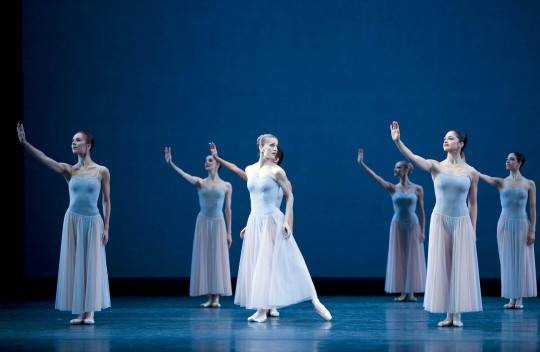
Above: Marianela Núñez and the Royal Ballet in Serenade, 2008. Photo: Johan Persson
#Balanchine#ballet#Balanchine ballet#Balanchine's legacy#rehearsing Balanchine#Maryinsky Ballet#Paris Opera Ballet#Royal Danish Ballet#Pacific Northwest Ballet#San Francisco Ballet#City Ballet of San Diego#NYCB@75#Bolshoi Ballet#Royal Ballet#Brian Siebert#Francia Russell#Lourdes Lopez#Silas Farley#Nikolaj Hubbe
25 notes
·
View notes
Text
Traveling to Mars #11 sticks the landing in the finale to one of the best comics in years
Traveling to Mars #11 sticks the landing in the finale to one of the best comics in years #comics #comicbooks
As Roy’s journey to Mars comes to an end, he is forced to reflect on his life and the future of those who still have one. Story: Mark RussellArt: Roberto MeliColor: Chiara Di FranciaLetterer: Mattia Gentili Get your copy now! To find a comic shop near you, visit http://www.comicshoplocator.com or call 1-888-comicbook or digitally and online with the links below. Zeus ComicsKindle This post…

View On WordPress
#ablaze#chiara di francia#comic books#Comics#featured#mark russell#mattia gentili#roberto meli#traveling to mars#video
0 notes
Text
Tea történet - filter nélkül
A tea története Kín��ban kezdődött. A legendák szerint Sen-nung kínai császárhoz és tudóshoz köthető a tea felfedezése Kr. e. 2737-ben, aki higiéniai okokból csak forralt vizet ivott. Egy alkalommal, amikor éppen egy teafa alatt üldögélt, néhány levél belehullott a fa alatt forralt vízbe; így született meg az első tea. Írott források azonban csak a Kr. e. 3. században említik ezt az italt, melyet összpontosítás és éberség javítására ajánl egy kínai orvos. A jelenleg ismert legkorábbi teafűmaradványok a Han dinasztiába tartozó Csing-ti kínai császár Kr. e. 2. század közepére keltezhető sírkomplexumából kerültek elő, melyek bizonyítják, hogy az uralkodói családban ekkor már előszeretettel fogyasztották a teát.

A legendabeli Sen-nung császár
A tea csak a Kr. u. 4–5. századtól kezdve terjedt el szélesebb körben és elindult a teafű kereskedelme is. Eleinte szilvalé – mint ragasztóanyag – segítségével kis gombócokat, lepényeket formáztak a meggőzölt, összetört tealevelekből, melyet teafőzés előtt kellett csak porrá őrölni. Így a tea sokáig elállt és megőrizte aromáját, ami praktikus volt, ha távolabbi vidékekre szállították. Kr. u. 476-ból feljegyzések vannak arról, hogy az arabokkal folytatott cserekereskedelemben fizetőeszközként is alkalmazták ezeket a tealabdacsokat.
A tea „aranykorának” a Tang-dinasztia uralkodását tartják (Kr. u. 7–9. század), amikor szigorú szabályozása alakult ki, hogy miként kell termeszteni, betakarítani és feldolgozni a teát. Így például a tealeveleket begyűjtő fiatal lányok erős illatú fűszerekhez – mint a fokhagyma, hagyma – nem érhettek, hogy tisztán megőrizhessék a tea aromáját. Ebben az időszakban íródott meg az első teáról szóló könyv is, melyben éppúgy helyet kapott a teafajtáknak, a tea feldolgozásának, gyógyhatásainak leírása, mint a teásedények fajtáinak vagy a teaivás hagyományainak részletezése.

A tealevelek feldolgozásának 17. századi ábrázolása (forrás: Pettigrew 2009)
Európába holland vagy portugál kereskedők által érkezett meg elsőként a tea a 17. század elején selyemmel, brokáttal, porcelánnal és fűszerekkel együtt. Hamarosan népszerű lett holland, francia, német, angol és orosz területeken is, ám a legtöbb helyen a 17. század végére a kávé jórészt kiszorította a teát és csak Angliában és Oroszországban vált igazán közkedveltté. Ekkor már elhagyták a teagombócok készítését és szálas formában érkezett Európába a tea, mely azonban veszített aromájából és tartósságából a labdacsokhoz képest. Ezért egy új módszert fejlesztettek ki, hogy a szálas tea is alkalmas legyen távolsági kereskedelemre: a teafaleveleket fermentálták, majd felhevítették. Így született meg a fekete tea, mint a zöld tea egy változata.

Fekete és zöld teafű
Angliában 1706-ban nyitotta meg kávéházát a híres teavállalat alapítója Thomas Twining, ahol teát is felszolgáltak. Ekkoriban a tea azonban még meglehetősen költséges cikk volt a rá kivetett adó miatt, így csak a legtehetősebbek engedhették meg maguknak. Ugyanakkor egész hálózatok alakultak ki teacsempészetre és elkezdték hamisítani a teát. Elterjedt módszer volt, hogy más leveleket (pl. kökényleveleket) kevertek a teafűhöz vagy a már lefőzött tealeveleket kiszárították és melasszal színezték, de olyan is előfordult, hogy juhtrágyába áztatott kőrisfa levelet árultak teaként.
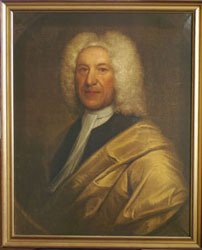
Thomas Twining
Az angol „ötórai tea” szokásának kialakulása a 19. századra vezethető vissza és Annához, Bedford hetedik hercegnőjéhez köthető, aki délután, az ebéd és a vacsora között megéhezve teasüteménnyel felszolgált teát fogyasztott, melyre idővel barátait is meghívta. Így vált közösségi eseménnyé és terjedt el Londonban, majd egész Angliában a délutáni teaivás szokása.
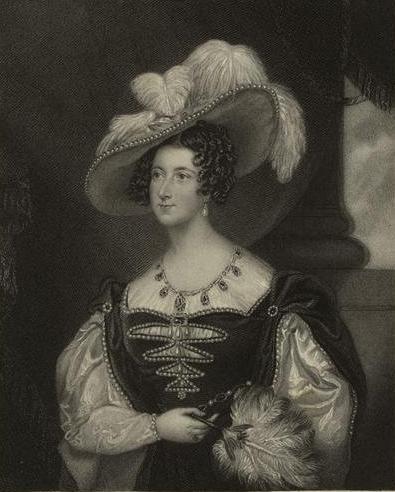
Anna Russel bedfordi hercegnő
Az angolok a növekvő igény és a Kínával megromló kereskedelmi kapcsolatok hatására új teatermelő vidékek után kutattak, így kezdődött meg a teatermesztés Észak-Indiában és Ceylonban (Srí Lanka) is a 19. században. A ceyloni tea széleskörű elterjedése összeforr Thomas Lipton nevével, aki a ceyloni ültetvényein termesztett teát saját fűszerkereskedéseiben kezdte árulni, így a közvetítőket kiiktatva sikerült kedvező árú terméket eladnia.

Lipton tea szállítása (forrás: Pettigrew 2009)
A tea Észak-Amerikába is eljutott az Európából kivándorló telepesek által. Népszerűsége azonban számottevően csökkent a kávé ellenében, amikor az angol kormány adót vetett ki az Amerikába érkező teaszállítmányokra. Az 1773-as „bostoni teadélutánként” nevezett esemény alkalmával az adó elleni tiltakozásként a kikötőbe beérkező angol hajókról 340 láda teát dobtak a vízbe indiánnak öltözött telepesek.

A bostoni teadélután ábrázolása egy 1846-os metszeten
Trestyánszki-Polyák Teodóra
Felhasznált irodalom: Lu, H., Zhang, J., Yang, Y. et al. Earliest tea as evidence for one branch of the Silk Road across the Tibetan Plateau. Scientific Reports 6, 18955 (2016). https://doi.org/10.1038/srep18955
Pettigrew, J. Tea. Ínyencek kézikönyve. Ford. Búsné Pap J. Budapest, GABO Könyvkiadó, 2009.
#régészet#miskolc#hermanottómúzeum#miskolcimúzeum#múzeum#homregeszet#tea#történelem#tea történet#tea idő#tea time#filter nélkül#trestyánszki-polyák teodóra
49 notes
·
View notes
Text
“ Le invenzioni e le scoperte portano benefici a tutti. Il progresso della scienza è una faccenda che riguarda tutto il mondo civile. Non ha una vera importanza il fatto che un uomo di scienza sia inglese, francese o tedesco. Le sue scoperte sono a disposizione di tutti e per trarne profitto non occorre niente di più dell'intelligenza. Il mondo dell'arte, della letteratura e del sapere, è internazionale; quel che vien fatto in un paese, non vien fatto per quel paese, ma per l'umanità. Se ci domandiamo che cosa eleva la umanità al disopra delle bestie, che cosa ci permette di considerare la razza umana più importante di qualsiasi specie di animali, scopriremo che non sono cose delle quali una nazione può avere la proprietà esclusiva, ma sono tutte cose che il mondo intero può spartirsi. Coloro che tengono a queste cose, coloro che desiderano vedere l'umanità feconda nel lavoro che soltanto gli uomini possono fare, non baderanno gran che ai confini nazionali e si cureranno ben poco di sapere a quale Stato un individuo deve fedeltà.
L'importanza della cooperazione internazionale al difuori del campo della politica mi è stata dimostrata dalla mia stessa esperienza. Fino a poco tempo fa ero occupato nell'insegnamento di una nuova scienza che pochi uomini al mondo erano in grado di insegnare. Il mio lavoro si basava soprattutto sull'opera di un tedesco e di un italiano. I miei allievi venivano da tutto il mondo civile : Francia, Germania, Austria, Russia, Grecia, Giappone, Cina, India e America. Nessuno di noi era cosciente di un senso di diversità nazionale. Ci sentivamo un avamposto della civiltà, occupati a costruire una strada nella foresta vergine dell'ignoto. Tutti collaboravano all'impresa comune e nell'interesse di questo lavoro le inimicizie politiche delle nazioni sembravano insignificanti, temporanee e futili. Ma non è soltanto nell'atmosfera piuttosto rarefatta di una scienza astrusa che la collaborazione internazionale è vitale per il progresso della civiltà. Tutti i problemi economici, la questione di garantire i diritti della mano d'opera, le speranze di libertà in patria e di umanità fuori, poggiano sulla creazione di una buona volontà internazionale. Finché odio, sospetto e paura, dominano i sentimenti degli uomini, non possiamo sperare di sfuggire alla tirannia della violenza e della forza bruta. Gli uomini devono imparare ad essere coscienti degli interessi comuni dell'umanità che sono identici, piuttosto che ai cosiddetti interessi dai quali le nazioni sono divise. Non è necessario, e neanche desiderabile, eliminare le differenze di educazione, di usi e di tradizioni tra le diverse nazioni. Queste differenze danno ad ogni singola nazione la possibilità di contribuire in modo distintivo alla somma totale della civiltà del mondo. “
Bertrand Russell, Le mie idee politiche. Una guida per orientarsi nelle ideologie politiche di tutti i tempi, traduzione di Adriana Pellegrini, Longanesi & C. (serie ocra, collana Pocket saggi n° 525), 1977; pp. 144-46.
[1ª Edizione originale: Political Ideals, New York: The Century Co., 1917; full text Here]
NOTA: nella prefazione l’autore puntualizza: «Questo libro è stato scritto nel 1917, ma pubblicato soltanto in America. Avrebbe dovuto essere una serie di conferenze, ma il ministero della Guerra lo impedì. Il primo capitolo doveva essere una conferenza da tenersi a Glasgow, presieduta da Robert Smillie, presidente della Federazione Minatori. Poco prima della data fissata per la conferenza il governo mi proibì l'ingresso in quelle che venivano chiamate « zone proibite », tra le quali era compresa Glasgow. Queste zone comprendevano tutto quanto si trovava vicino alla costa, e l'ordine era inteso contro le spie, per impedire che facessero segnalazioni ai sottomarini tedeschi. Il ministero della Guerra fu tanto cortese da dire che non mi sospettava di spionaggio a favore dei tedeschi; mi accusò soltanto di fomentare il disinteresse industriale, allo scopo di por fine alla guerra. Smillie annunciò che avrebbe tenuto la riunione di Glasgow nonostante la mia inevitabile assenza e infatti lesse la conferenza che avrei dovuto tenere io. Il pubblico rimase piuttosto sorpreso dalla differenza dal suo solito stile; ma alla fine, Smillie annunciò di aver letto la conferenza proibita. Il governo aveva troppo bisogno di carbone per agire contro di lui.»
#Bertrand Russell#Le mie idee politiche#libertà#nazionalismo#intellettuali del XX secolo#filosofia#scienza#progresso#libri#ricerca scientifica#saggi#scritti saggistici#letture#citazioni#comunità scientifica#intelligenza#cultura#umanità#leggere#libertà di pensiero#saggistica#politica#civiltà#educazione#cooperazione internazionale#insegnamento#filosofi del '900#Prima guerra mondiale#Adriana Pellegrini#internazionalismo
10 notes
·
View notes
Text
coppie

[*]

[*]

© Édouard Boubat [*] coppia distesa sull'erba - Francia anni '60

[*]

László Moholy-Nagy [*] Belle Isle - 1926

© Russell James [*] Candice Swanepoel e Lily Aldridge nel libro ‘Angels’
via www.pinterest.it/
via www.facebook.com/people/
https://henk-heijmans.tumblr.com/
https://somewhere-tonight.tumblr.com/
https://kunlej.tumblr.com/
https://neversaynevernick.tumblr.com/
4 notes
·
View notes
Text
BANDA SONORA ORIGINAL

BANDA SONORA ORIGINAL DE THE TATOOIST OF AUSCHWITZ
Sony Music Masterworks lanza THE TATTOOIST OF AUSCHWITZ (BANDA SONORA DE LA SERIE ORIGINAL) con música de HANS ZIMMER y KARA TALVE de Bleeding Fingers Music. Ya disponible, el álbum cuenta con música original escrita por Zimmer y Talve para las series Sky y Peacock Original, que se inspira en la historia de la vida real de las prisioneras del Holocausto Lali y Gita Sokolov.
Consíguelo AQUÍ
El proyecto fue profundamente personal para ambos co-compositores: la madre de Zimmer huyó del régimen nazi en 1938, mientras que la abuela de Talve pasó la guerra escondida en Francia con su profesor de piano. Esta conexión se extiende a la instrumentación de la partitura, basada principalmente en violín y piano, con Talve grabando en el piano de su abuela, tomada del maestro que la protegió durante la guerra. Basada en el libro más vendido de Heather Morris, El tatuador de Auschwitz ya está disponible en Peacock en los EE. UU., Sky Atlantic y en servicios de streaming en el Reino Unido e Irlanda, Italia, Alemania, Austria y Suiza, y Stan en Australia.
Sobre la partitura, HANS ZIMMER dice: "Cuando entras en la tierra de Auschwitz, estás entrando en un mundo que no puedes imaginar, por lo tanto, tenemos que hacer música de una manera que no podemos imaginar que sea la música. El filósofo alemán Theodor W. Adorno dijo en 1949: "Escribir poesía después de Auschwitz es bárbaro". Creo que eso se puede extender a la música. Así que me pareció muy importante escribir música que fuera, por un lado, profundamente humana y por el otro profundamente perturbadora, fría, de otro planeta. Un planeta que nunca queremos visitar. Es difícil decir que El tatuador de Auschwitz es solo una historia de amor, pero por supuesto es una historia de amor. Pero en un contexto donde el amor es un acto revolucionario, un acto de desafío. Hay un tema general de horror, aislamiento, soledad, supervivencia. Los dos instrumentos principales son el piano y el violín; Esto último puede sonar hermoso, pero muy rápidamente puede sonar aterrador, alienante, frío e inhumano".
"Antes de comenzar el proceso de composición, Hans, Russell [Emanuel, productor de la partitura] y yo tuvimos una conversación sobre cómo debería sonar la partitura", añade la cocompositora KARA TALVE, y continúa: "El mensaje general de Hans era que no debíamos hacer que sonara sentimental: hay una gran diferencia entre lo emocional y lo sentimental. La partitura tenía que ser abstracta y sutil. Espero que los espectadores sientan los momentos oscuros y emotivos de esta historia porque es imperativo que sigamos contando estas historias. También espero que sientan que el amor y la humanidad en las condiciones más oscuras posibles pueden prosperar".
También se incluye en el álbum una nueva canción de la cantante, compositora, actriz, escritora y directora ganadora de los premios Emmy, Grammy, Oscar® y Tony, Barbra Streisand, titulada "Love Will Survive". La primera grabación de Streisand para una serie de televisión, "Love Will Survive", está compuesta por el dos veces ganador del Oscar® Hans Zimmer en colaboración con la nominada al Emmy Kara Talve, parte del colectivo de compositores Bleeding Fingers Music, y el ganador del Grammy Walter Afanasieff, con letras del nominado al Grammy y al Globo de Oro Charlie Midnight. Streisand está acompañado en esta nueva grabación por la Orquesta Sinfónica de Londres dirigida por William Ross. La canción está producida por los ganadores del Grammy Walter Afanasieff y Peter Asher. Barbra Streisand, Jay Landers y Russell Emanuel son los productores ejecutivos.
SOBRE THE TATTOOIST OF AUSCHWITZ
El tatuador de Auschwitz es la historia de un hombre, Lali (Hauer-King), un judío eslovaco, que, en 1942, es deportado a Auschwitz, el campo de concentración donde más de un millón de judíos fueron asesinados durante el Holocausto.
Poco después de su llegada, Lali se convierte en uno de los Tätowierers (tatuadores), encargados de entintar números de identificación en los brazos de sus compañeros de prisión. Un día, conoce a Gita (Próchniak) al tatuarse su número de prisionera en el brazo, lo que lleva a un amor que desafía los horrores que los rodean. Así comienza una historia valiente e inolvidable. Bajo la vigilancia constante de un volátil oficial nazi de las SS Stefan Baretzki (Jonas Nay), Lali y Gita están decididas a mantenerse vivas la una a la otra.
Alrededor de 60 años después, Lali (Keitel), ahora en sus 80 años, conoce a la aspirante a escritora Heather Morris (Lynskey). Recientemente viuda, Lali encuentra el coraje para contarle al mundo su historia. Al contarle su pasado a Heather, Lali finalmente se enfrenta a los fantasmas traumáticos de su juventud y revive sus recuerdos de enamorarse en los lugares más oscuros.
THE TATTOOIST OF AUSCHWITZ (ORIGINAL SERIES SOUNDTRACK)
TRACKLISTING –
Whatever It Takes
Krompachy
If Someone Sees Her
Just Like When I Met Her
I'm Free
How Can You Be Here?
What Happens to the Women?
The Tenor (Quando m'en vo)
You Think You're Special
One Day, When It's Safe
Not Long Now
Whatever It Takes (Grandma's Piano)
You Have No Fear
Not The Women And Children
We Will Be Strong (Chazak, Chazak, v'nitchazek)
I Will Find You
The Death March
Mekudeshet li (Sacred To Me)
To See It Through These Old Eyes
Ani Ma'amin (I Believe)
Whatever It Takes (Say Goodbye To This Place)
Love Will Survive – Barbra Streisand**
**Pista vocal
HANS ZIMMER
Hans Zimmer ha conseguido más de 500 proyectos en todos los medios, que combinados han recaudado más de 28 mil millones de dólares en la taquilla mundial. Zimmer ha sido honrado con dos Premios® de la Academia, tres Globos de Oro®, cuatro Grammys®, un American Music Award y un® Tony Award. Sus trabajos más destacados incluyen Dune: Part One, Top Gun: Maverick, No Time to Die, Gladiator, The Thin Red Line, As Good as It Gets, Rain Man, la trilogía The Dark Knight, Inception, Thelma and Louise, The Last Samurai, 12 Years A Slave, Blade Runner 2049 (co-musicalizada con Benjamin Wallfisch) y Dunkerque, así como varias temporadas de Prehistoric Planet de David Attenborough, incluida la próxima tercera temporada, y Dune: Part Two de Denis Villeneuve, la continuación de su banda sonora ganadora del Premio® de la Academia para Dune: Part One. Más allá de sus composiciones galardonadas, Zimmer es un artista de gira de notable éxito, que acaba de concluir su segunda gira europea "Hans Zimmer Live" y se presenta en Oriente Medio en el famoso Coca-Cola Arena de Dubái durante dos noches consecutivas, así como en el Gran Premio de Singapur de Fórmula 1. Su gira "World of Hans Zimmer", que comisarió y dirigió, comenzó su última gira europea de más de 50 fechas este mes de marzo inmediatamente después del lanzamiento de Dune: Part Two.
KARA TALVE
Kara Talve es una compositora nominada al Emmy para cine y televisión y, como compositora líder en Bleeding Fingers Music, ha fortalecido una variedad de proyectos a través de su extraordinario talento y sus agudas habilidades de colaboración. Más recientemente, compuso la banda sonora de Prehistoric Planet de Apple TV+ junto a Hans Zimmer y Anže Rozman, que fue narrada por David Attenborough y producida por Jon Favreau en conjunto con la Unidad de Historia Natural de BBC Studios. La partitura nominada al Emmy, que cuenta con instrumentos de otro mundo construidos a medida mezclados con una orquesta de 80 músicos, ha recibido elogios mundiales, incluida una victoria a la Mejor Banda Sonora Original para una Serie Documental en los Hollywood Music in Media Awards (HMMA) y una nominación a los Bulldog Television Broadcast Awards 2022. La banda sonora de Prehistoric Planet ha acumulado, hasta la fecha, más de 80 millones de reproducciones.
Durante los últimos 5 años, se ha desempeñado como compositora principal en la icónica serie animada, Los Simpson; sus estilos han variado desde el icónico sonido orquestal del programa hasta casi todos los demás géneros imaginables (incluidos sus famosos episodios anuales Treehouse of Horror).
Los estrenos recientes de Kara incluyen Faraway Downs, de Baz Luhrmann, Adrift, dirigida por el documentalista ganador del Emmy Rory Kennedy, y The Tattooist of Auschwitz, de Sky TV/Peacock.
Al crecer como pianista de formación clásica, Kara continuó su educación musical y perfeccionó sus habilidades en la composición de bandas sonoras para películas en el Berklee College of Music de Boston. Fue reconocida al principio de su carrera profesional por BMI y fue galardonada con la beca de composición cinematográfica por su excepcional talento musical y su potencial de éxito. Actualmente reside en Los Ángeles.
BLEEDING FINGERS MUSIC
Dos veces ganador del Emmy y nominado al BAFTA, Bleeding Fingers Music es una fuerza creativa establecida en el mundo de la música para medios visuales. El colectivo de compositores liderado por la colaboración se ha encargado de elevar muchos proyectos icónicos, entre los que destacan Los Simpson de Fox y Planet Earth II y Blue Planet II de la BBC. El equipo también se ha convertido en una fuente de música confiable para muchas cadenas y estudios, como Netflix, Paramount, Fox Apple, Hulu, NBS, Disney, National Geographic, History, A&E y Sony Pictures. Bleeding Fingers ha reunido a un colectivo de compositores excepcionales con diversos talentos, proporcionándoles un entorno de vanguardia que fomenta la creatividad, la experimentación y la colaboración. El equipo proviene de ocho países y sus diversos estilos, influencias y orígenes se unen para darle a nuestra música un atractivo de amplio alcance. El equipo también ha encontrado formas innovadoras de llevar a los músicos convencionales al mundo de la música, colaborando con artistas como Radiohead, Sia, Camilla Cabello, RAYE y Bastille.
Basado en el campus de renombre mundial de Hans Zimmer respaldado por el mejor equipo de producción de su clase, Bleeding Fingers produce música al más alto nivel. Bleeding Fingers ha creado música original para producciones como: Beckham (Netflix), Planet Earth III (BBC), Frozen Planet II (BBC), Blue Planet II (BBC), Planet Earth II (BBC), Seven Worlds (BBC), Seven Worlds (BBC), The Simpsons (Fox), Faraway Downs (Hulu), Superfly (Sony Pictures), La princesa Diana, En sus propias palabras (Nat Geo), Droga (Netflix), Zoológico alienígena (Dreamscape), Los planetas (BBC), American Playboy (Amazon), El imperio romano (Netflix), El ascenso de los bárbaros (Historia), Las guerras mundiales (Historia), Grandes felinos (BBC), Snatch (Crackle), The Making Of The Mob (AMC), Savage Kingdom (Nat Geo), Intervention (A&E), Masterchef (Fox) y 13 Minutes To The Moon (BBC).
Sony Music Masterworks comprende los sellos Masterworks, Sony Classical, Milan Records, XXIM Records y Masterworks Broadway. Para obtener actualizaciones e información por correo electrónico, siga a Sony Soundtracks en el enlace aquí: https://lnk.to/sonysoundtracks.
2 notes
·
View notes
Text
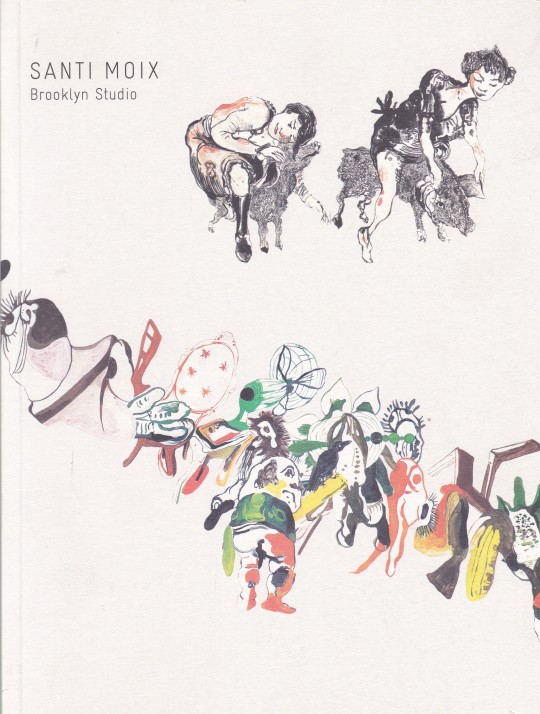
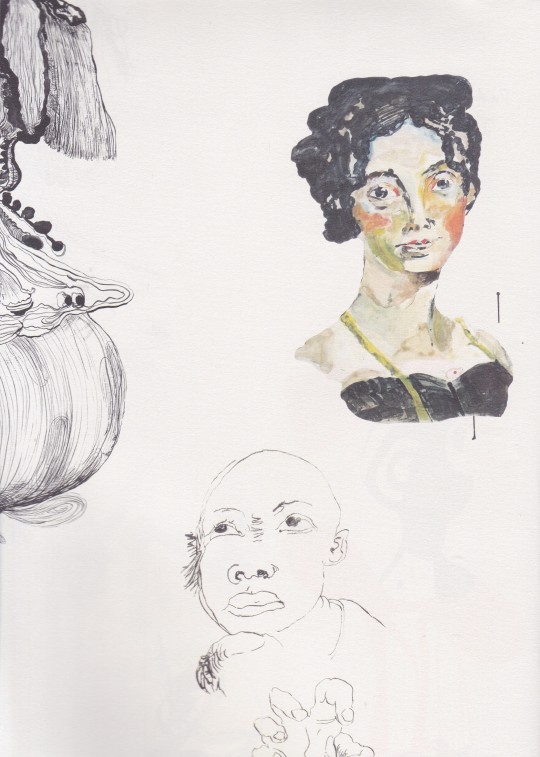
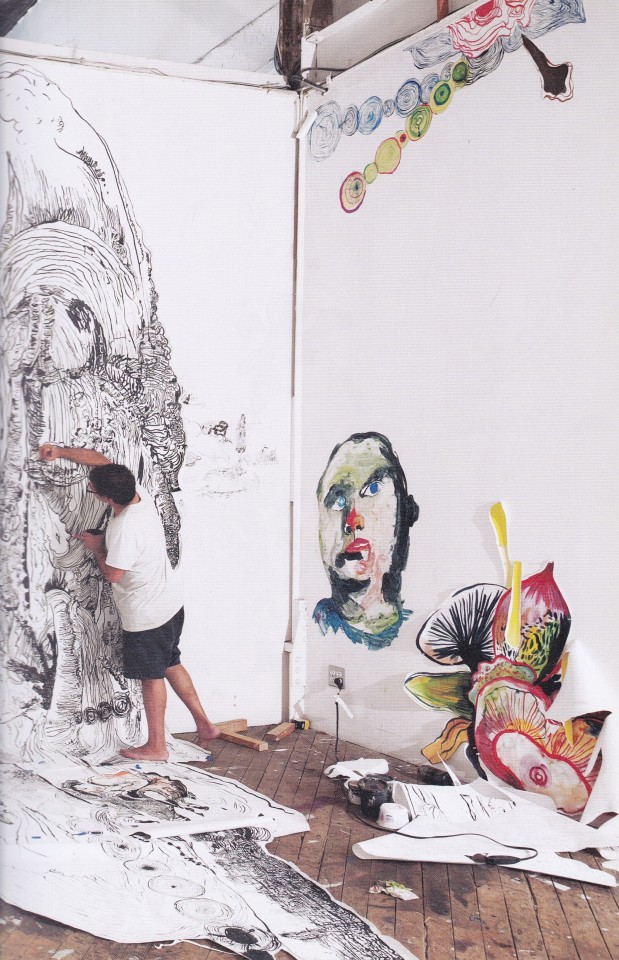
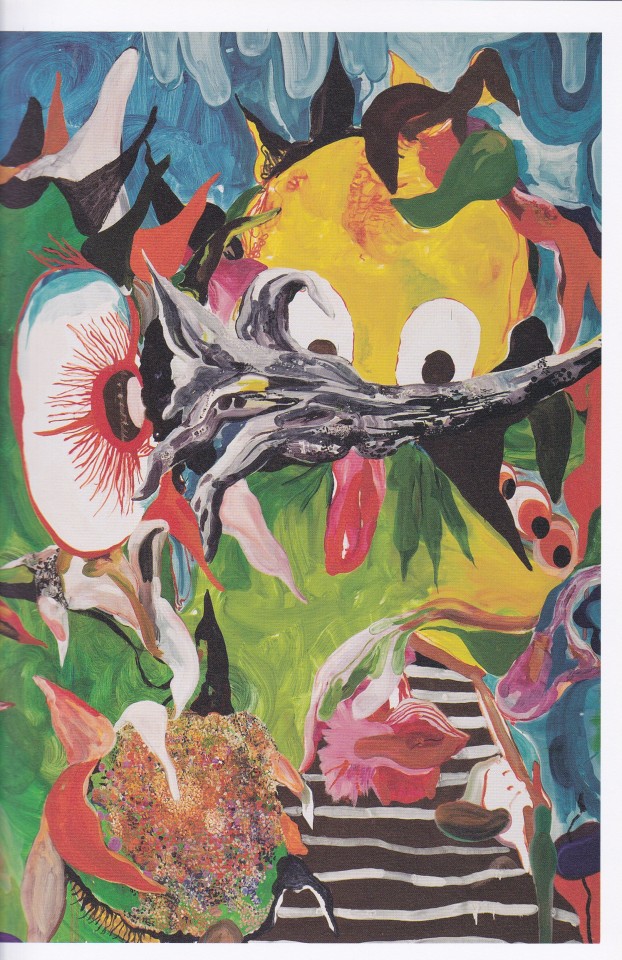
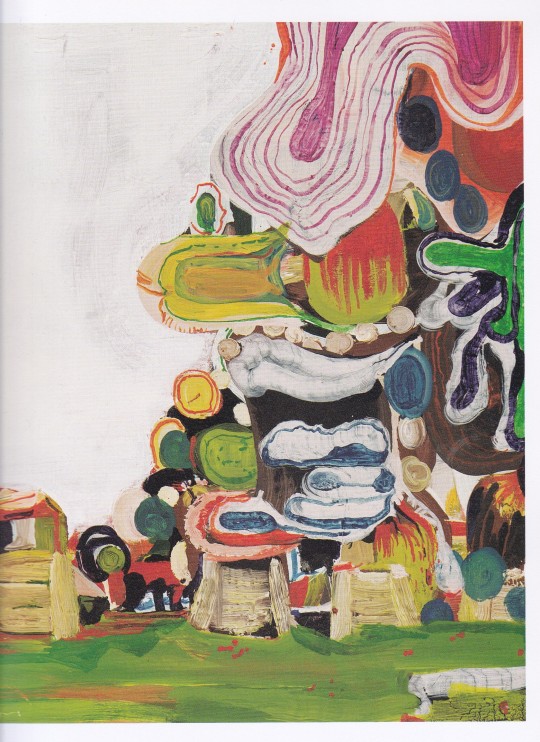
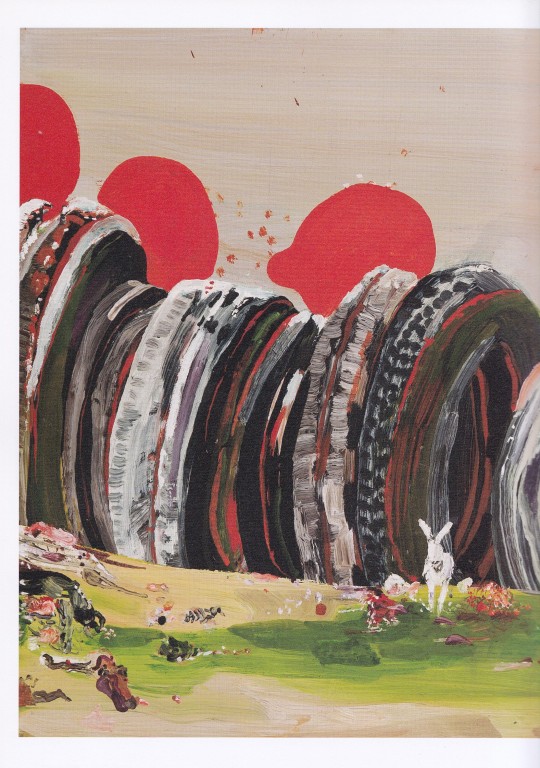
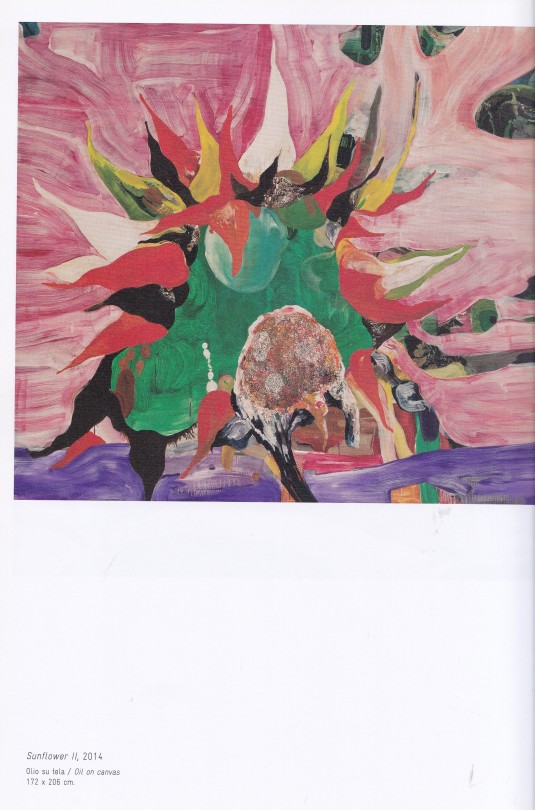
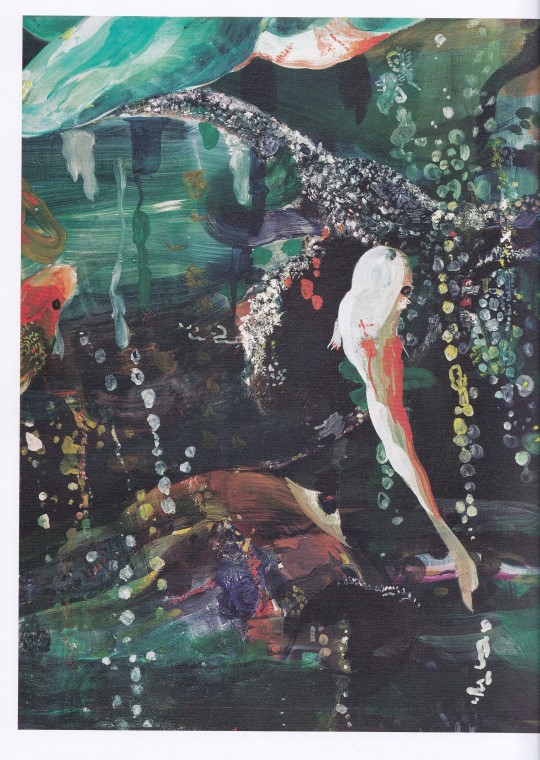
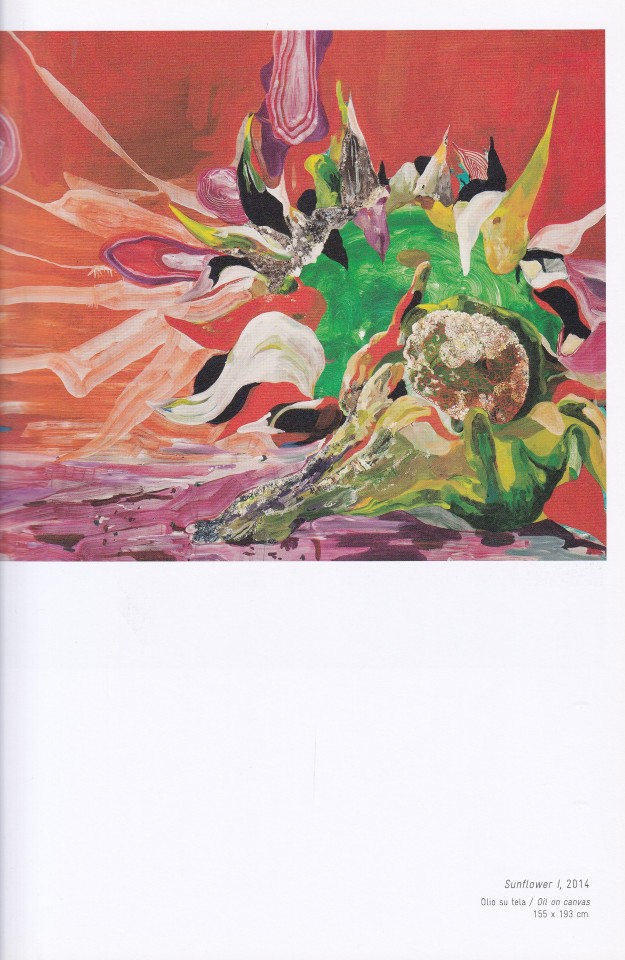
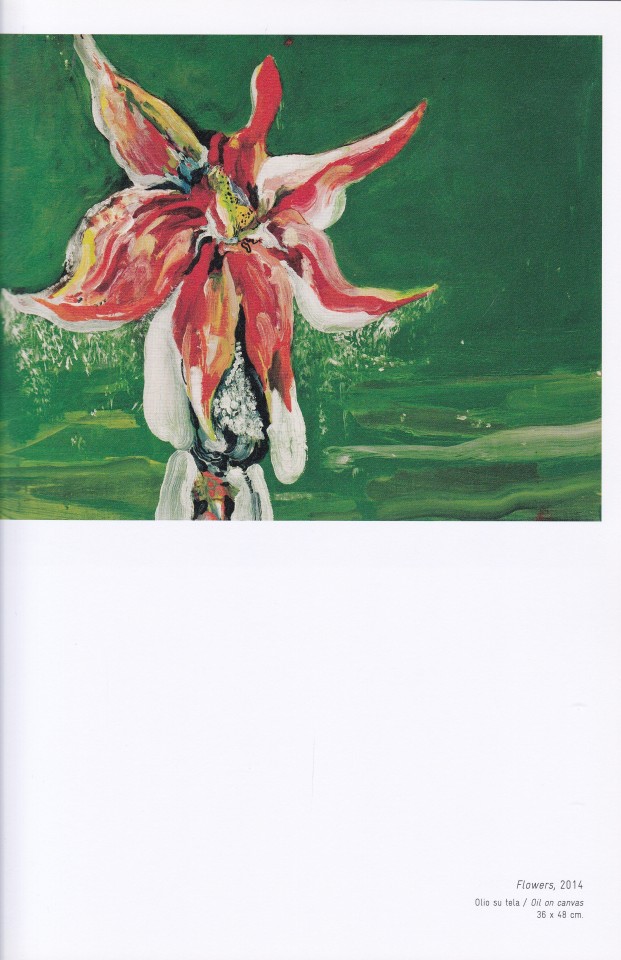
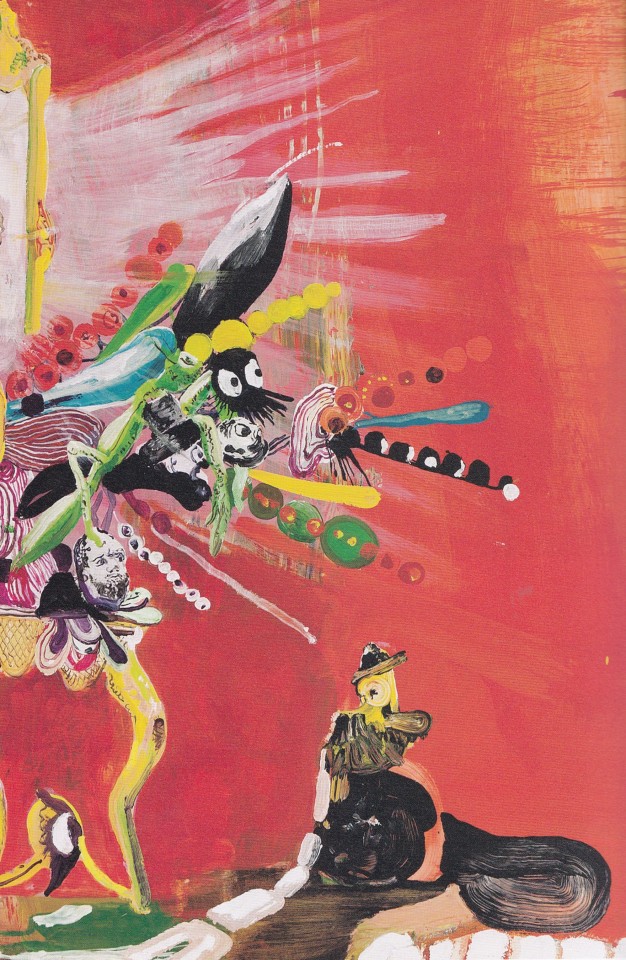
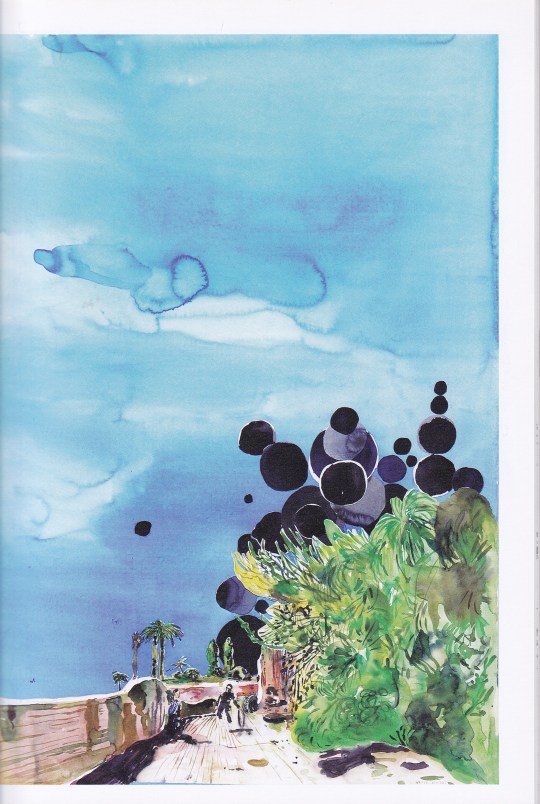
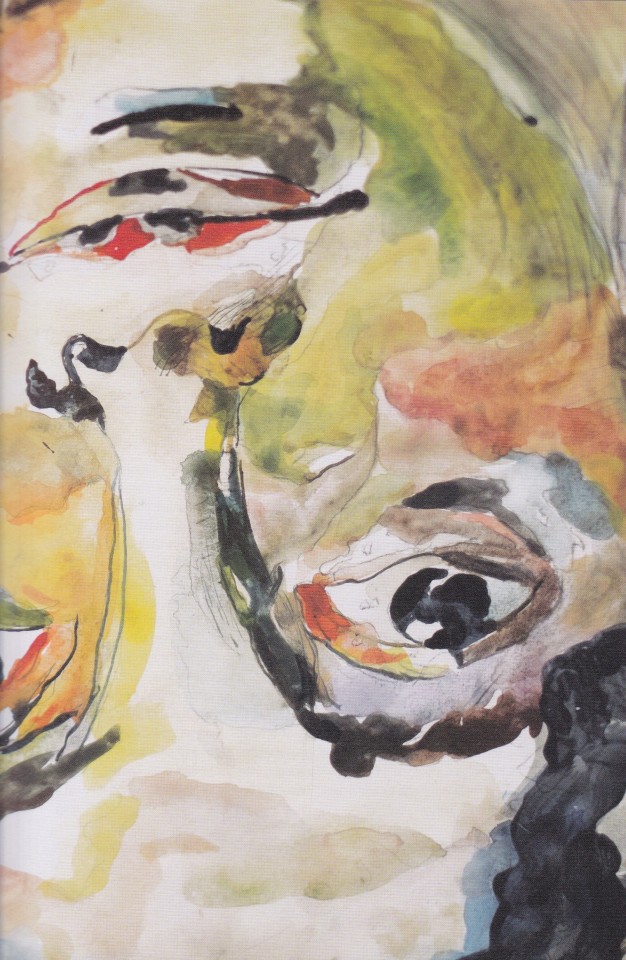
Santi Moix Brooklyn Studio
Testo di Luca Beatrice
Fotografie Ben Russell, Joshua Nefsky, Coordinamento editoriale Silvia Berselli, Art direction Wonderingsold
M77 Gallery, Milano 2014, 130 pagine,
euro 50,00
email if you want to buy [email protected]
Pubblicato in occsione della mostra M77 Gallery Milano 2014 in collaborazione con Paul Kasmin Gallery New York
Santi Moix, una delle personalità più interessanti dell’ambiente artistico newyorkese. L’esposizione propone 40 lavori inediti, tra dipinti e acquerelli, e una grande installazione site specific, pensata appositamente per gli spazi della galleria. Catalano di nascita (Barcellona, 1960), Santi Moix ha attinto dai frequenti viaggi e dai soggiorni di studio (Francia, Italia, Giappone, Africa) la linfa vitale per nutrire la sua creatività, fino a trovare nella metropoli americana un sicuro approdo dove sviluppare la sua arte. Influenzato da maestri quali Delacroix, Velàzquez, El Greco, Picasso, Mirò, Pollock, Moix ha avuto e continua ad avere, dal mondo della letteratura una altrettanto importante fonte d’ispirazione. L’immaginario letterario costituisce davvero un considerevole bagaglio di informazioni per la sua pittura. Non è un caso che la sua più recente personale in terra catalana ruotava attorno alle avventure di Huckleberry Finn, l’immortale personaggio di Mark Twain, con un’installazione di disegni e un grande wall drawing. “Ciò che cerco di fare, ogni giorno - afferma Santi Moix - è ribellarmi al passato e ai codici, che la mia opera non si capisca a prima vista, tentare che l’opera diventi intelligente da sola. Mi piacciono i quadri che sembrano idioti. Lottare contro gli istinti che conducono a certi automatismi, mi piace pensare che le foreste frondose siano grandi orecchie. Penso a Ramon Llull (scrittore e filosofo di Majorca) che diceva: captare sempre nell’ambiente le idee e proiettarle finché si convertono in sostanza propria. Veniamo da una grande esplosione, l’idea che questa stessa esplosione uscirà sulla tela e si perderà per sempre. La mia funzione, come artista, è quella di congelare l’istante”.
14/12/23
#Santi Moix#art exhibition catalogue#M77 Gallery Milano 2014#ambiente artistico NY#art books#fashionbooksmilano
3 notes
·
View notes
Text

CINE La inglesa y el duque (2001) Título original: L'Anglaise et le Duc Francia Dirección: Éric Rohmer Idioma: Francés con Subtítulos en Español
Atención: Solo para ver en PC o Notebook Para ver el Film pulsa o copia y pega el Link: https://artecafejcp.wixsite.com/escenario-cafejcp/post/la-inglesa-y-el-duque-2001
Reparto: Lucy Russell. Jean-Claude Dreyfus. François Marthouret. Alain Libolt · Laurent Le Doyen · Daniel Tarrare.
Género: Drama | Histórico. Siglo XVIII. Revolución Francesa.
Sinopsis: Reconstrucción de las memorias de Miss Grace Eliott, una inglesa monárquica que vivió durante la Revolución Francesa y que tuvo una relación amorosa con el Duque de Orleans.
Críticas: "Una obra maestra, una película inolvidable, inundada de generosidad, inteligencia y espíritu de libertad" -Ángel Fernández Santos: Diario El País
Premios: 2001: Premios César: 2 nominaciones: mejor vestuario y diseño de producción. 2001: Premios del Cine Europeo: Nominada a mejor director
Café Mientras Tanto jcp
0 notes
Text



#ProyeccionDeVida
📣 Kino Cat / Cine Tulipán, presenta:
🎬 “LOS DEMONIOS“ [The Devils]
🔎 Género: Terror / Drama / Siglo XVII /Religión / Exorcismos / Basado en hechos reales
⌛️ Duración: 103 minutos
✍️ Guion: Ken Russell y John Whiting
📕 Novela: Aldous Huxley

🎼 Música: Peter Maxwell Davies
📷 Fotografía: David Watkin
🗯 Argumento: Francia, siglo XVII, un sacerdote (Oliver Reed), una monja (Vanessa Redgrave) y un exorcista mezclan la política y la histeria sexual. Controvertido, turbador y polémico film sobre un clérigo, en la Francia del XVII, acusado de herejía. La historia se basa en los hechos reales de la ciudad de Loudun, que son conocidos como el caso más grande de posesión diabólica jamás registrado dentro de la Iglesia Católica.

👥 Reparto: Vanessa Redgrave (Hermana Jeanne), Oliver Reed (Urbain Grandier), Max Adrian (Ibert), Gemma Jones (Madeleine), Dudley Sutton (Baron De Laubardemont), Georgina Hale (Philippe), Brian Murphy (Adam), Michael Gothard (Padre Barre), Murray Melvin (Mignon), John Woodvine (Trincant) y Kenneth Colley (Legrand).
📢 Dirección: Ken Russell
© Productora: Russo Productions
🌎 País: Reino Unido
📅 Año: 1971

📽 Proyección:
📆 Martes 16 de Julio
🕗 9:15pm.
🐈 El Gato Tulipán (Bajada de Baños 350 – Barranco)
🚶♀️🚶♂️ Ingreso libre
0 notes
Link
0 notes
Text
Traveling To Mars #11 Review
Traveling To Mars #11 Review #travelingtomars #markrussell #ablaze #ablazecomics #comics #comicbooks #news #mcu #art #info #NCBD #comicbooknews #previews #reviews
Writer: Mark Russell Artist: Roberto Meli Colorist: Chiara Di Francia Letterer: Mattia Gentili Cover Artists: Roberto Meli; Gabriele Bagnoli; Ciro Cangialosi; Brent McKee Publisher: Ablaze Price: $3.99 Release Date: April 3, 2024 Roy arrived on Mars with his robot companions. While Leopold and Albert’s lives will continue, Roy’s oxygen is nearly gone. He received his final message from the Easy…

View On WordPress
#Ablaze#Ablaze Comics#Ablaze Comics Reviews#Ablaze Reviews#Reviews#Traveling To Mars#Traveling To Mars 11#Traveling To Mars 11 Review
0 notes
Text
I nomi per cani 2024

L'anno 2023 è l'anno della "U" per i nomi dei cani, con il grande successo di Uno, Ulysse, Uma. Nel 2024, è il turno della lettera "V", e tutti i pronostici sono aperti: Vanille, Vénus, Vuitton o Vérone? Poiché i nomi delle città sono sempre molto diffusi (Rio, Tokyo, Oslo...). Il nome dipende anche ovviamente dalla razza. Tra le più popolari in Francia ci sono il golden retriever, il pastore australiano, il Jack Russell e il labrador. E se hai bisogno di aiuto per fare la scelta migliore, la grande rete di pet sitter e dog walker, Rover, ha creato un generatore per trovare il nome perfetto. Visita il blog su Rover.com/fr/blog! Read the full article
0 notes
Text
Traveling to Mars #10 is another amazing issue showing off what makes the series stand out
Traveling to Mars #10 is another amazing issue showing off what makes the series stand out #comics #comicbooks
Roy reflects on life during his final 24 hours of life on Mars. Story: Mark RussellArt: Roberto MeliColor: Chiara Di FranciaLetterer: Mattia Gentili Get your copy now! To find a comic shop near you, visit http://www.comicshoplocator.com or call 1-888-comicbook or digitally and online with the links below. TFAWZeus ComicsKindle This post contains affiliate links, which means that if you click…

View On WordPress
#ablaze#chiara di francia#comic books#Comics#featured#mark russell#mattia gentili#roebrto meli#traveling to mars#video
0 notes
Text

Título: Madame Sisley a orillas del Loing en Moret (1887) Artista: John Russell (Australia, 16 de junio de 1858-22 de abril de 1930)
Detalles Lugar donde se realizó el trabajo: Moret-sur-Loing → Isla de Francia → Francia Fecha: (1887) Materiales usados: óleo sobre lienzo Dimensiones: camilla de 45,7 x 60,9 cm; Marco de 53,0 x 78,5 x 9,5 cm. Fecha de firma: Firmado en l, óleo negro/verde "JOHN. RUSSELL". No fechado. Crédito: Comprado con la ayuda de Margaret Hannah Olley Art Trust 1996
Información e imagen de la web de la Art Gallery NSW.
1 note
·
View note
Text






ELISA STRINNA + VITÓRIA MONTEIRO + FRANCES SCOTT + CHU-LI SHERWRING
ENCUENTROS EN LA TERCERA FASE
En los tres cortometrajes que se presentan en esta sesión se producen encuentros entre mujeres, una científica que vive en condiciones extremas con su psicóloga, una joven con su abuela y dos cineastas en torno a la figura de Wendy Carlos, en los que se vislumbran otras posibilidades de vida y de entender el mundo.
The Antartic Gardener, de Elisa Strinna. Países Bajos / Italia. 2022. 24 minutos. VOSE – Estreno Internacional - Una ficción especulativa sobre la generación de ecosistemas artificiales que serán necesarios para sobrevivir en un futuro próximo, contada a través de un historia de confinamiento y supervivencia humana y vegetal en el entorno extremo de la Antártida.
La jardinera de la Antártida es una científica que trabaja en un invernadero en el Polo Sur, haciendo crecer vida donde no debería haber. La serenidad que se respira en el interior de los contenedores que habita y cultiva, contrasta con las furiosas fuerzas naturales que se desatan en el exterior. La obra se presenta también como un retrato sobre el aislamiento y sus efectos tanto físicos, como mentales y psicológicos en el ser humano. A su vez la película estudia las relaciones, las consecuencias y los límites de las relaciones entre naturaleza y tecnología.
La película tuvo su premiere mundial en el Festival de Rotterdam 2023.
Elisa Strinna (Italia, 1982) artista multimedia italiana que trabaja fundamentalmente en los campos de la escultura, el sonido y el vídeo. Se graduó en Artes Visuales en IUAV (Universidad de Venecia), completando sus estudios con un posgrado en Documentos y Arte Contemporáneo en ÉESI (L'École Européenne Supérieure de l'image) en Francia. Comenzó su carrera cinematográfica en 2011 con los cortometrajes Dust y The Appel Girl, The Antartic Gardener es su última película hasta la fecha. Su trabajo ha sido exhibido entre otros museos y centros de arte en: Culturgest Lisboa y Oporto (Portugal), Bienal de Taipei (China), Museo MACRO y Museo MART (Italia) o Espai d’art contemporani de Castelló (España)
Mis amigos son los pájaros…, de Vitória Monteiro. Austria / Brasil. 2023. 15 minutos. VOSE – Estreno Internacional -
Partiendo de Feminismo Glitch (Un manifiesto) de Legacy Russel, el encuentro de la cineasta con su abuela sirve de punto de partida para reflexionar sobre la importancia de encontrar comunidad desde la propia familia, hasta colectivos sociales y redes online, para compartir vida y experiencias y afrontar luchas comunes sin temer ser utópicas. Varias reuniones de Vitória Monteiro con Ethel Indarte, su abuela uruguaya de 88 años, sacan a la luz las memorias de ésta, que escribiera 15 años atrás, una mujer que sufrió una gran soledad y que logró su independencia realizando arreglos florales, verbalizar esta historia por primera vez se convierte en un elemento catártico para la emancipación.
La película tuvo su estreno en Graz – Diagonale Film Festival (Austria)
Vitória Monteiro (Brasil, 1994) Cineasta, artista visual y cantante, trabaja de forma multidisciplinar en vídeo, escultura y collage. Formada en teatro en la Universidad Federal do Rio Grande do Sul, en 2016 se mudó a Austria para estudiar en la Academia de Bellas Artes de Viena especializándose en Imagen en movimiento y arte digital. Actualmente actúa en diferentes circuitos artísticos y políticos y su práctica tiene como fundamento una mirada política y queer-feminista. Ha mostrado su trabajo en la Bienal de Venecia (Pabellón Austria 2019), Wiener Filmmuseum (Austria) o Improper Walls Gallery.
Wendy (exhibition version), de Frances Scott y Chu-Li Shewring. Reino Unido. 2023. 35 minutos. VOSE - Estreno Internacional -
Wendy es una carta cinéfila en respuesta al trabajo de la pionera compositora de música electrónica Wendy Carlos, planteada como un dúo a cuatro manos y un piano, entre las dos cineastas, quienes juntas aprenden a tocar Timesteps, una transcripción de la partitura original que compuso para A Clockwork Orange (Stanley Kubrick, 1971). La partitura inicialmente compuesta para ser interpretada con sintetizadores, aquí es interpretada al piano propiciando ciertas disonancias y arritmias que dan una nueva lectura al tema original, propiciando una forma íntima y compleja de habitar la partitura.
La película transita a través de vocoders, archivos, relecturas, eclipses solares, retornos cíclicos y aprendizaje colaborativo en busca de una síntesis sonora como forma de ser. El material visual del que se nutre combina un amplio espectro de texturas que van desde película en 16 mm procesada de forma artesanal hasta imágenes realizadas con tecnología digital en 3D, en busca de, parafraseando a Donna Harawey: “un mundo sin género, que quizás sea un mundo sin génesis, pero tal vez también un mundo sin fin”.
Wendy se presentó este verano en formato expositivo en el Centro de Arte Contemporáneo TACO! de Londres.
Frances Scott (Reino Unido, 1981) Artista visual que trabaja en la periferia de la producción cinematográfica. Sus películas se basan en procesos colaborativos con especialistas de otras disciplinas, guiados por extensas investigaciones. Sus proyectos se materializan tanto en películas, como en instalaciones, publicaciones o piezas sonoras. Sus trabajos audiovisuales se han presentado en festivales y centros de arte como el de NIFF de Nueva York, Oberhausen, BFI Londres, CTM Berlin, Anthology Film Archives (Nueva York) o Whitechapel Gallery (Londres)
Chu-Li Shewring (Reino Unido, 1977) Cineasta y diseñadora de sonido. Licenciada en el London College of Communication, master en Diseño sonoro en la National Film and Television School. En el campo sonoro ha trabajado con cineastas y artistas como Jeremy Deller, Beatrice Gibson, Steve McQueen, Ben Rivers o Aura Satz. Como cineasta sus películas combinan entrevistas, material de archivo y documental, con paisajes sonoros delicadamente elaborados para crear realidades que se ubican en algún lugar entre la realidad y la ficción. Sus películas han participado en festivales como Róterdam, Sheffield DocFest, The London Film Festival, Festival de cine de Edimburgo, Uppsala ISFF, Camerimage, Festival Punto de Vista de Navarra o el Festival de Toronto.
#she makes noise#smnfestival#Elisa Strinna#Vitória Monteiro#Frances Scott#Chu-Li Shewring#artistas#smn2023#cine
0 notes
Text
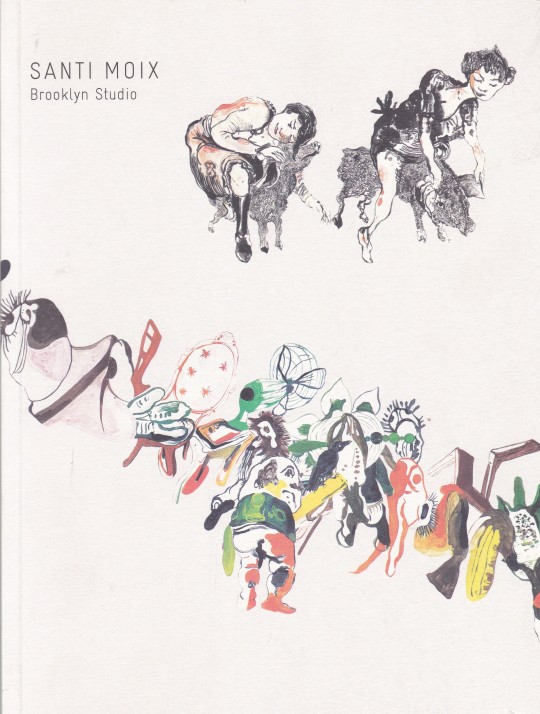

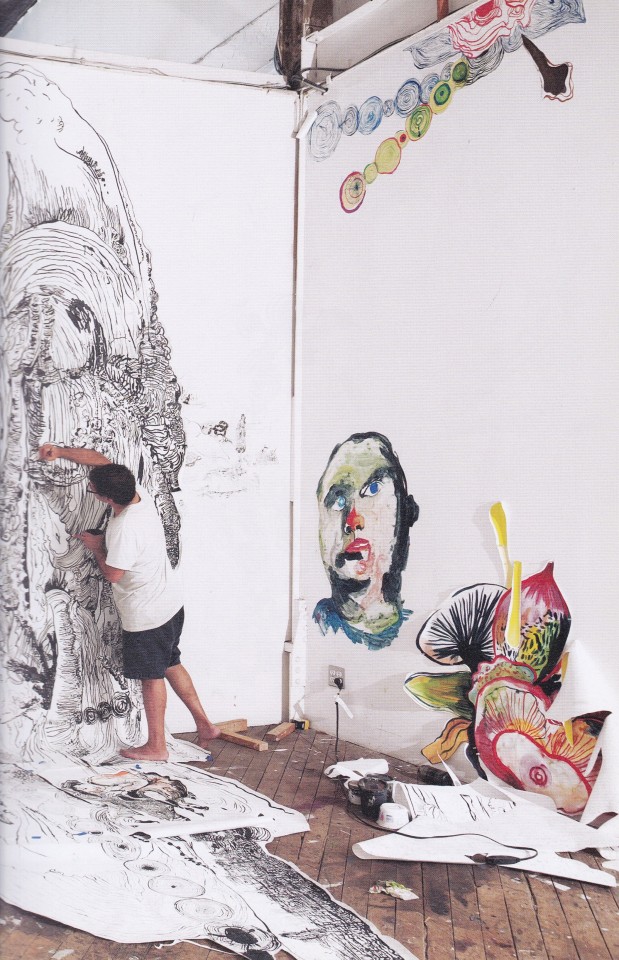
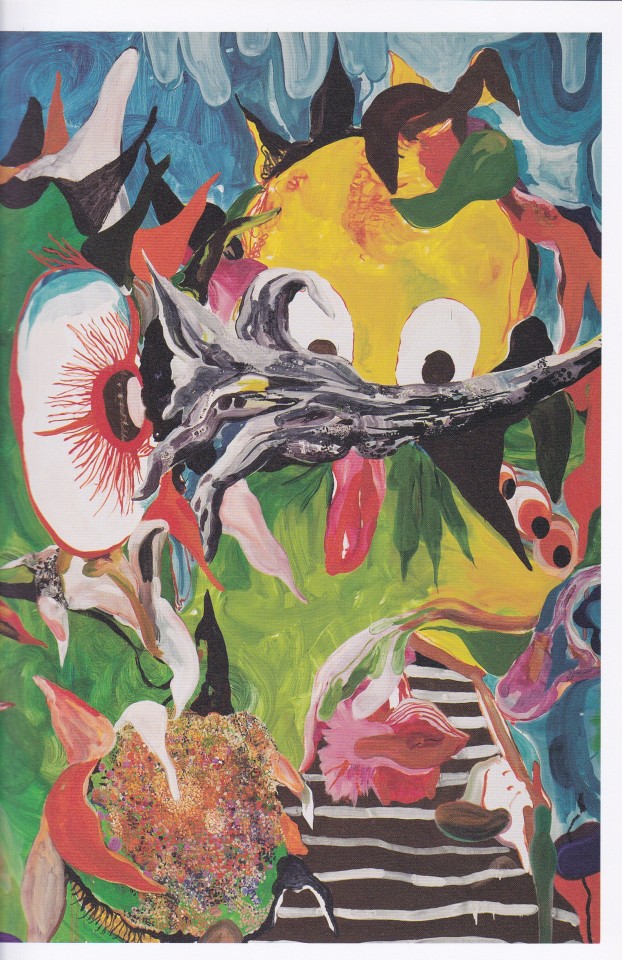

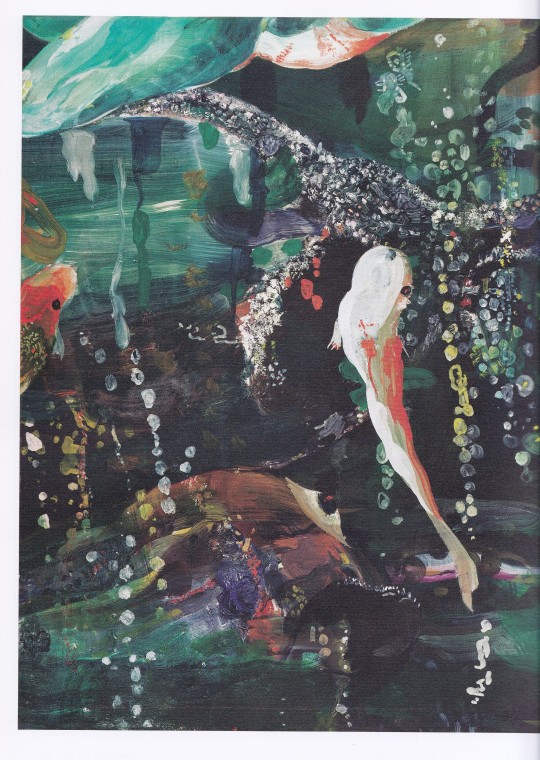

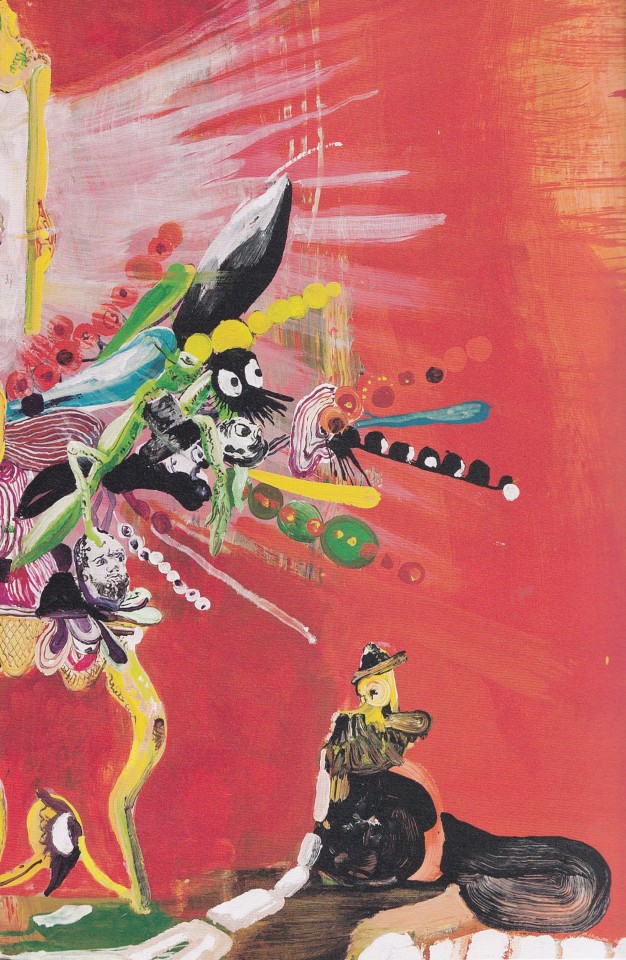
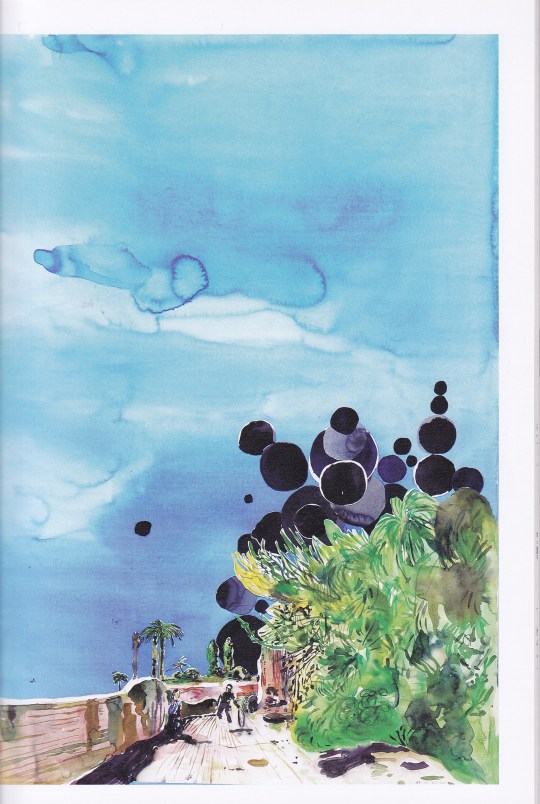

Santi Moix Brooklin Studio
a cura di Luca Beatrice
Art direction Wonderingsolo, Coordinamento editoriale Silvia Berselli, Fotografie Ben Russell, Joshia Nefsky
M7 Gallery, Milano 2014, 130 pagine
euro 40,00
email if you want to buy : [email protected]
pubblicato in occasione della mostra M77 Gallery, Milano 2014 in collaborazione con Paul Kasmin Gallery, New York
La prima personale italiana dell’artista catalano, ma newyorkese d’adozione, presenterà 40 opere inedite, tra oli e acquerelli, oltre a un’installazione site specific, studiata per l’occasione.
Dopo l’evento inaugurale dedicato alle opere su carta di Luca Pignatelli, M77 Gallery (via Mecenate 77), il nuovo spazio espositivo milanese per l’arte contemporanea italiana e internazionale, presenta un evento dedicato a Santi Moix, una delle personalità più interessanti dell’ambiente artistico newyorkese. L’esposizione, realizzata in collaborazione con Paul Kasmin Gallery, dal titolo Brooklyn Studio, curata da Luca Beatrice, propone 40 lavori inediti, tra dipinti e acquerelli, e una grande installazione site specific, pensata appositamente per gli spazi della galleria. Catalano di nascita (Barcellona, 1960), Santi Moix ha attinto dai frequenti viaggi e dai soggiorni di studio (Francia, Italia, Giappone, Africa) la linfa vitale per nutrire la sua creatività, fino a trovare nella metropoli americana un sicuro approdo dove sviluppare la sua arte. Influenzato da maestri quali Delacroix, Velàzquez, El Greco, Picasso, Mirò, Pollock, Moix ha avuto e continua ad avere, dal mondo della letteratura una altrettanto importante fonte d’ispirazione. L’immaginario letterario costituisce davvero un considerevole bagaglio di informazioni per la sua pittura. Non è un caso che la sua più recente personale in terra catalana ruotava attorno alle avventure di Huckleberry Finn, l’immortale personaggio di Mark Twain, con un’installazione di disegni e un grande wall drawing.
#Santi Moix#art exhibition gallery#M77 Gallery Milano 2014#rare books#Luca Beatrice#fashionbookmilano
1 note
·
View note